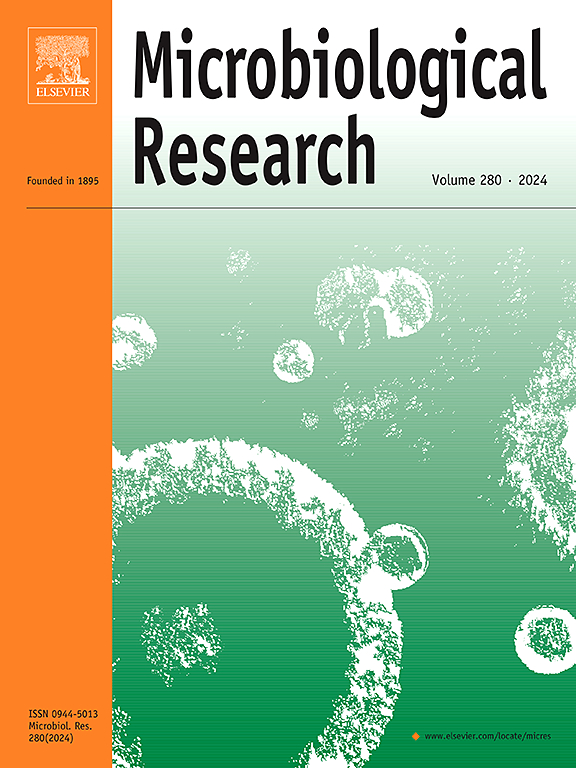三七根分泌皂苷通过塑造根际微生物群落削弱土壤病害抑制能力
IF 6.1
1区 生物学
Q1 MICROBIOLOGY
引用次数: 0
摘要
根腐病是由土壤病原菌尖孢镰刀菌(Fusarium oxysporum)引起的,由于其在根际迅速重建,对根腐病提出了重大挑战。植物根系分泌物,特别是皂苷,选择性地影响微生物群落,使这种病原体的可持续控制复杂化。本研究探讨了三七根分泌的皂苷对尖孢镰刀菌增殖及相关微生物群落的影响。研究结果表明,根际皂苷选择性地丰富了尖孢镰刀菌的种群,同时抑制了有益的微生物群落,如齐藤菌、Mortierella和链霉菌,导致土壤微生物生态系统平衡被破坏,导致根腐病的发生增加。外源有益合成菌群(saiitozyma + Mortierella + Streptomyces)的引入促进了三七的生长,减少了尖孢镰刀菌的定植,恢复了根际土壤的抗病特性,有效缓解了根腐病。综上所述,我们的研究强调了能够降解根分泌物和拮抗病原体的外源微生物群对于有效管理源自土壤的疾病的重要性。本文章由计算机程序翻译,如有差异,请以英文原文为准。
Root-secreted saponins weaken soil disease suppression ability by shaping rhizosphere microbial communities in Panax notoginseng
Root rot disease, driven by the soil-dwelling pathogen Fusarium oxysporum, poses a significant challenge due to its rapid re-establishment in the rhizosphere. Plant root exudates, particularly saponins, selectively influence microbial communities, complicating the sustainable control of this pathogen. This study explored how saponins secreted by Panax notoginseng roots affect the proliferation of F. oxysporum and the associated microbial community. Our results indicate that rhizosphere saponins selectively enrich F. oxysporum populations while suppressing beneficial microbial communities, such as Saitozyma, Mortierella, and Streptomyces, resulting in the disruption of the balance within the soil microbial ecosystem and a rise in the occurrence of root rot disease. The introduction of exogenous beneficial synthetic microbiota (Saitozyma + Mortierella + Streptomyces) promoted the growth of P. notoginseng and reduced the colonization of F. oxysporum, restored rhizosphere soil's disease-suppressive properties, effectively mitigating root rot disease. Taken together, our research underscores the importance of exogenous microbiota capable of degrading root exudates and antagonizing pathogens for the effective management of diseases originating from the soil.
求助全文
通过发布文献求助,成功后即可免费获取论文全文。
去求助
来源期刊

Microbiological research
生物-微生物学
CiteScore
10.90
自引率
6.00%
发文量
249
审稿时长
29 days
期刊介绍:
Microbiological Research is devoted to publishing reports on prokaryotic and eukaryotic microorganisms such as yeasts, fungi, bacteria, archaea, and protozoa. Research on interactions between pathogenic microorganisms and their environment or hosts are also covered.
 求助内容:
求助内容: 应助结果提醒方式:
应助结果提醒方式:


